The Intellectual and Developmental Disability System Redesign Advisory Committee advises on the implementation of the acute care services and long-term services and supports system redesign for individuals with intellectual and developmental disabilities.
Statewide Intellectual and Developmental Disabilities strategic plan. Dara Nix: Dara.Nix@hhsc.state.tx.us and Joy Kearney: Joy.Kearney01@hhsc.state.tx.us
The Behavioral Health Strategic Plan, Second Edition, was released in February of 2019 and it contains the first IDD Gap Survey. This having been published, the next phase of data collection is being developed, and will incorporate new considerations based on the limitations of the first survey. Today, we will review IDD gap survey results and discuss the second round of surveys. The timeline for the strategic plan update appears below. In the future, the IDD plan will be a stand-alone plan. (Texas Announces First IDD Strategic Plan.)
Tentative Statewide IDD Strategic Plan Timeline
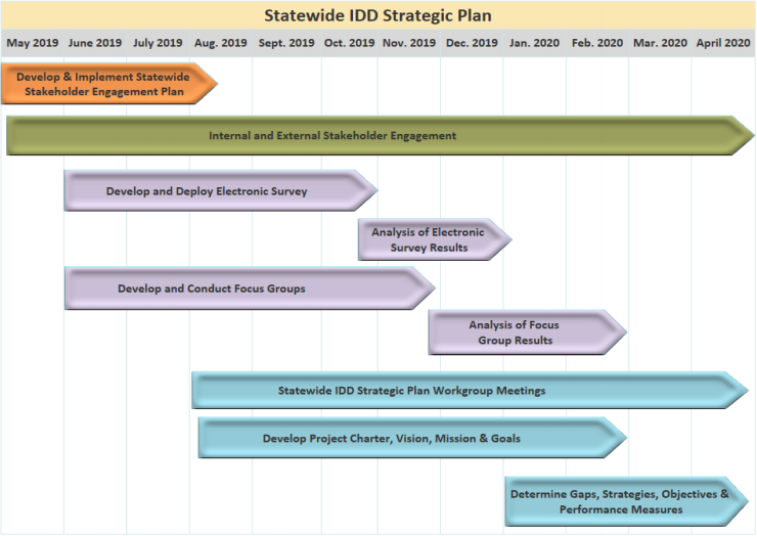
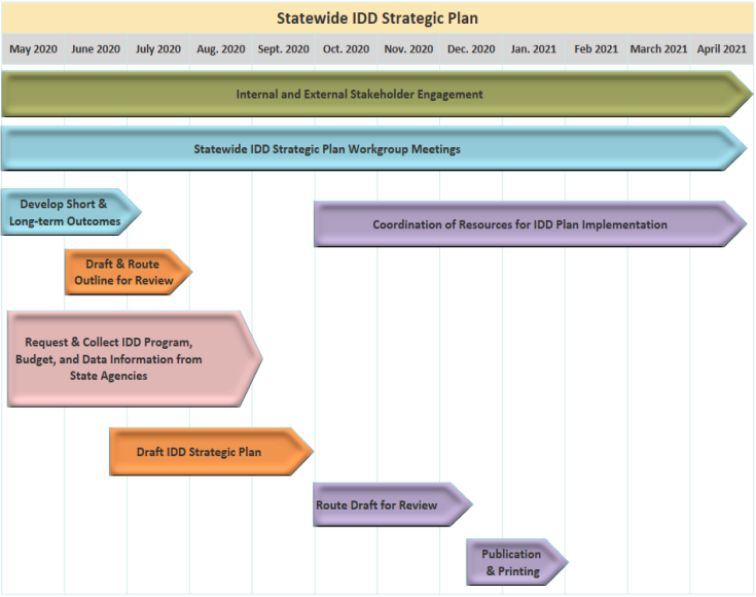
Summary of Initial Online Survey
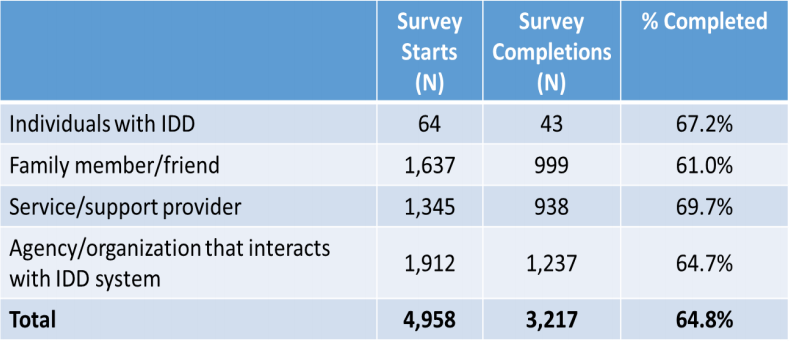
A comment was made that it would be good to know the size of Texas’ IDD population and what percent of that population responded to the survey. Another member stated that there are existing estimates, but it is very difficult to get accurate prevalence data due to shifting definitions, etc.
Key findings of the survey include:
- More than 50% of all respondents indicated at least one gap across all system categories included in the survey
- More than 70% of all respondents identified at least one gap within Family Supports and Employment
- Almost all respondents (90%) identified at least one gap within Access to Services
- Families were more likely to identify gaps within the IDD system than Providers/Agencies
Key limitations include:
- Lack of responses from individuals with IDD
- Individuals with IDD not asked about some system categories
- Respondent types not mutually exclusive
- Survey was too long, resulting in high attrition
- Survey results or presentation of results not clear to all stakeholders
- Rolling up gaps per service category when number of items differed
- Graphical representation of gaps across respondents
- Survey introduction asked respondents to identify weakness rather than provide overall feedback
Q: Were geographic (rural vs. urban) or demographic differences captured in the data? The speakers replied that that information was captured in the demographic data but not included in the overall results. That would be good to include in the future design.
HHSC, Center for Analytic and Decision Support continued with the presentation.
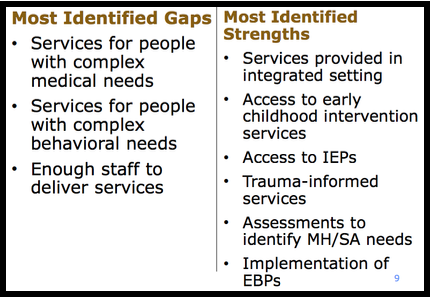
Q: Regarding the question about “enough staff to deliver services”— were the survey results able to distinguish between limited staff vs. high turnover? There’s a difference between having limited staff and having plenty of staff but never knowing who they are. A: No. The phrasing of the question, “Were there enough staff to effectively deliver the services”, did not capture those differences.
HHSC has created a satisfaction index, presented below. This approach uses an average score for reporting. These were compared across family members, providers, and others. There were not a lot of positive responses regarding the IDD system. It is unclear if the design encouraged more negative responses. Looking at the issues this way, employment is the area with the most gaps.
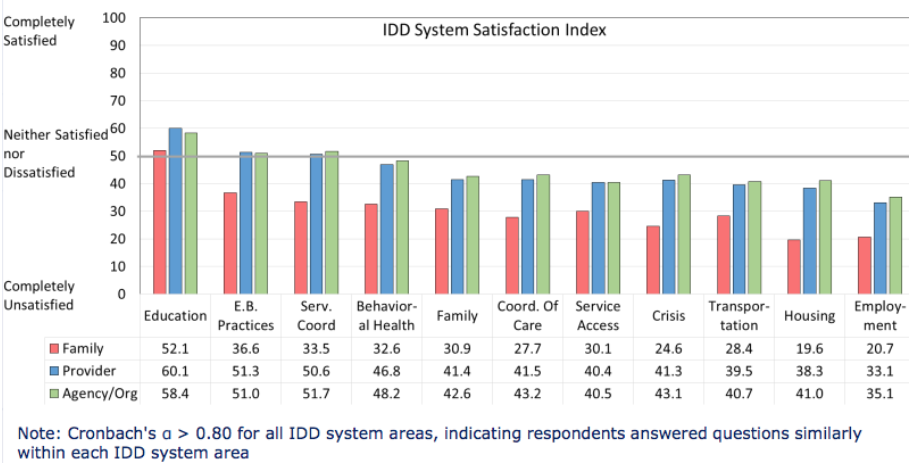
Ms. Tucker asked, regarding the section on access to IDD services and providers—was this open for response from everyone? Not just individuals with IDD? The speaker answered in the affirmative, but IDD individuals had different response options. (Information on pg. 100 in the strategic plan.)
C: People waiting for services will have a significantly different response from those receiving services, and varied experiences will impact respondent answers regarding satisfaction. C: It’s also important to know what program people are in.
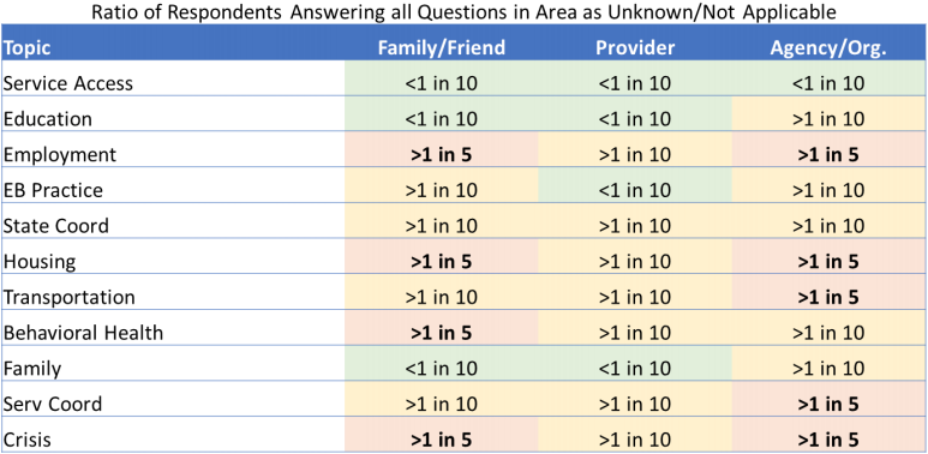
C: When you consider agency organization and diversity—depending on who responds to the survey, their response will reflect their microcosm of the world. When you deal with larger organizations, there are so many silos. It would be helpful to know what role the individual fulfills and therefore, what perspective they’re lending to the issue.
C: People should be able to skip sections that are not applicable to them.
C: There should be a question to determine whether an individual has ever been asked about employment.
Q: Did you look at race and ethnicity? A: We did not include those in the first round but will do so in the next round. Additionally, the survey was only available in English, which was a limitation for the original design.
The overarching purpose of the data collection efforts is to guide the IDD Strategic Plan. For the future, the survey will be refocused from a survey of the identification of weaknesses to overall feedback (positive and negative). HHSC will review the survey content areas and questions and will consider redefining survey “blocks”. New questions capable of measuring change will be developed and the process will incorporate focus groups for individuals with IDD.
C: It might be good to ask, “what were the most important services you received?” Or, “what’s an important service that you want to receive, but don’t?”
The refocus of the survey will reframe questions to receive all feedback (positive and negative). By asking for negative feedback it will result in different responses than asking for any feedback. The survey will be re-worded to include an introduction, email invitation, open-ended questions. (EX: “The Texas Health and Human Services Commission asked the Office of Mental Health Coordination to learn more about service gaps for people with IDD in Texas.”) (EX: “What gaps or challenges have you experienced with access to IDD services? Please provide examples.”)
There will be a review of the survey content to decrease the length of the online survey while preserving its utility. HHSC will determine whether there are areas or questions on the IDD survey that could be excluded as well as determine whether there are other areas of the IDD system that should be included. If additional areas are needed, there will be a need to consider redefining survey “blocks” or limiting “blocks” by respondent type. There will be blocks of questions per service components and a broader block on service delivery.
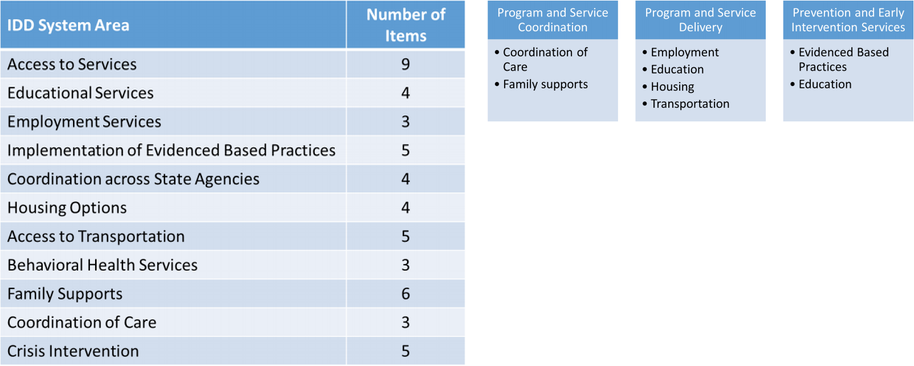
Measuring Change
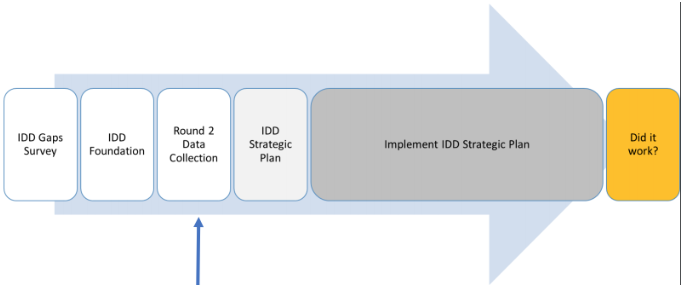
The floor was opened up to discussion concerning which areas should be covered. Summarized comments follow:
- Possibly standardize the items.
- We have identified significant gaps in the accessibility of services addressing complex needs. Given that we’ve been aware of this issue and it was confirmed by the first survey, do we need to keep asking about it? For the second survey, can we focus on asking questions we don’t know the answers to? HHSC had similar thoughts.
- We want to increase the number of people responding to the survey.
- Perhaps offer the opportunity for respondents to respond to specific areas of personal interest, like, employment.
- Housing and employment are very complicated, and these are good for a focus group discussion.
- Behavioral supports are challenging because of the need to find the right behavioral support.
- “Coordination of care” does not, in itself, provide clarity for respondents as to whether we’re discussing the MCO or the LIDDA. Both have “coordination of care.”
For the full report, follow this link.
***
The information contained in this publication is the property of Texas Insight. The views expressed in this publication are, unless otherwise stated, those of the author and not those of Texas Insight or its management.

